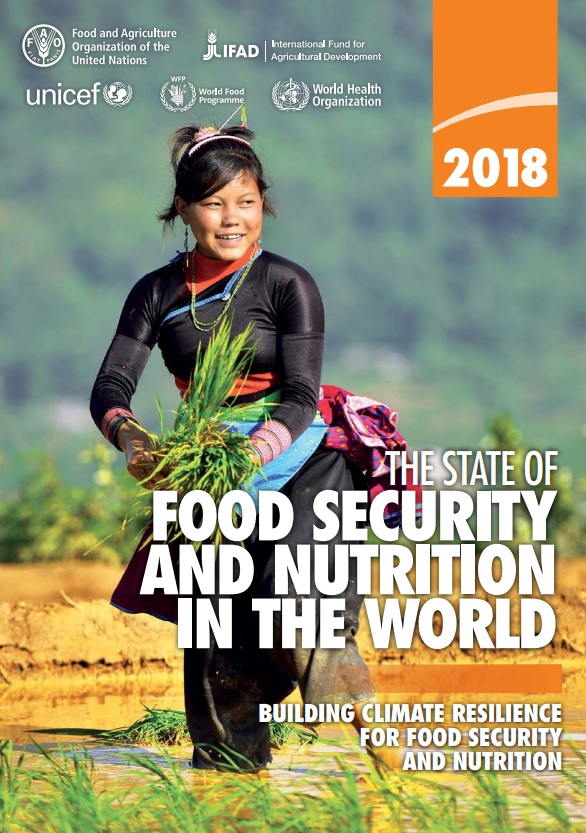Présentation
New evidence this year corroborates the rise in world hunger observed in this report last year, sending a warning that more action is needed if we aspire to end world hunger and malnutrition in all its forms by 2030. Updated estimates show the number of people who suffer from hunger has been growing over the past three years, returning to prevailing levels from almost a decade ago. Although progress continues to be made in reducing child stunting, over 22 percent of children under five years of age are still affected. Other forms of malnutrition are also growing: adult obesity continues to increase in countries irrespective of their income levels, and many countries are coping with multiple forms of malnutrition at the same time – overweight and obesity, as well as anaemia in women, and child stunting and wasting.
Last year’s report showed that the failure to reduce world hunger is closely associated with the increase in conflict and violence in several parts of the world. In some countries, initial evidence showed climate-related events were also undermining food security and nutrition. This year’s report goes further to show that climate variability and extremes – even without conflict – are key drivers behind the recent rise in global hunger and one of the leading causes of severe food crises and their impact on people’s nutrition and health. Climate variability and exposure to more complex,
frequent and intense climate extremes are threatening to erode and reverse gains in ending hunger and malnutrition. Furthermore, hunger is significantly worse in countries where agriculture systems are highly sensitive to rainfall, temperature and severe drought, and where the livelihood of a high proportion of the population depends on agriculture.
The findings of this report reveal new challenges to ending hunger, food insecurity and all forms of malnutrition. There is an urgent need to accelerate and scale up actions that strengthen resilience and adaptive capacity of people and their livelihoods to climate variability and extremes. These and other findings are detailed in the 2018 edition of The State of Food Security and Nutrition in the World.




